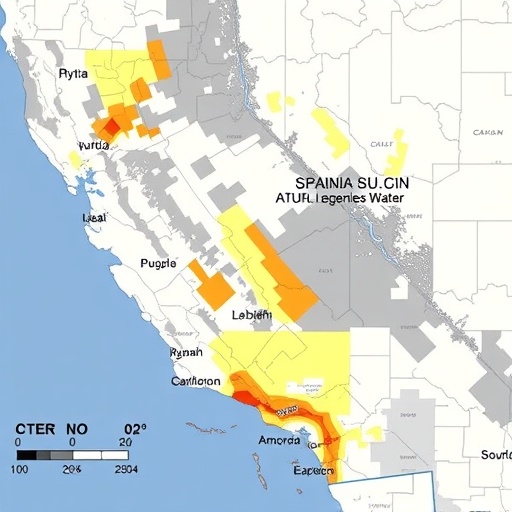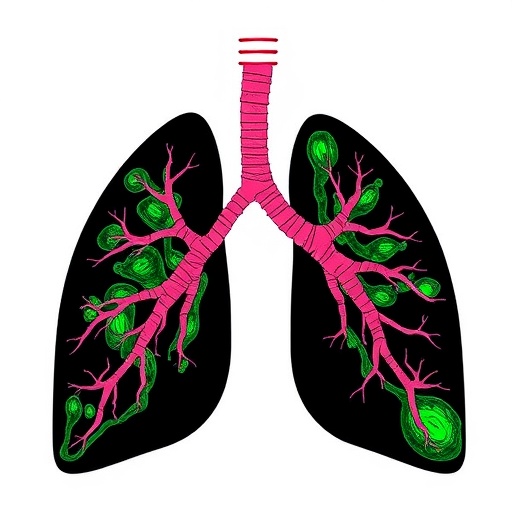In an unprecedented leap forward for neonatal medicine, researchers have unveiled a pioneering approach to charting the postnatal growth trajectories of infants born before 32 weeks’ gestation, utilizing the latest 2023 postnatal growth charts tailored specifically for preterm infants. This development holds enormous promise for the care and prognosis of one of the most vulnerable patient populations in neonatal intensive care units worldwide. The study, published in the Journal of Perinatology, meticulously categorizes the weight growth patterns of these early-born infants, offering a nuanced lens through which clinicians can better interpret developmental progress and tailor interventions accordingly.
Preterm infants, particularly those born before 32 weeks gestation, face a plethora of challenges, including impaired growth trajectories which significantly influence their immediate health outcomes and long-term neurological development. Historically, neonatal care providers have grappled with the limitations of growth charts primarily derived from term infants or generalized preterm populations, resulting in assessments that may lack the precision needed for individualized care. The 2023 postnatal growth charts represent a significant advancement, constructed from expansive, high-resolution datasets that provide clinicians with refined benchmarks reflective of contemporary neonatal nutritional and medical practices.
The research team, spearheaded by Chou, Yeh, and Hsueh, undertook a rigorous analysis of weight progression among very preterm infants, applying the new 2023 charts to categorize and stratify growth patterns with a level of granularity previously unattainable. This categorization is not merely academic; it translates into practical, bedside utility. Clinicians can now distinctly identify infants exhibiting optimal catch-up growth, those with static growth trajectories, and critically, those demonstrating a faltering or problematic growth course that may necessitate immediate intervention.
.adsslot_c1OpA0e7Z9{ width:728px !important; height:90px !important; }
@media (max-width:1199px) { .adsslot_c1OpA0e7Z9{ width:468px !important; height:60px !important; } }
@media (max-width:767px) { .adsslot_c1OpA0e7Z9{ width:320px !important; height:50px !important; } }
ADVERTISEMENT
Understanding weight growth in preterm infants is far from a straightforward task. Unlike term neonates, whose growth trends generally follow a predictable curve, preterm infants’ weight gain is influenced by multifactorial dynamics including medical complications, nutritional regimens, respiratory support, and underlying physiological immaturities. These confounders can mask true growth potential or indicate subtle early signs of morbidity. The utility of the 2023 growth charts lies in their sensitivity to these nuances, providing percentile-based categorizations that are representative of actual neonatal growth patterns observed in modern neonatal intensive care units.
In addition to its clinical implications, this categorization methodology enriches the epidemiological understanding of preterm growth. By applying a uniform framework of analysis, researchers worldwide can compare outcomes, benchmark interventions, and facilitate multi-center collaborations aimed at improving the quality of neonatal care. This global standardization is a potential game-changer, especially in regions where neonatal mortality and morbidity rates remain unacceptably high.
The technological underpinnings of the 2023 postnatal growth charts are equally noteworthy. Integration of advanced statistical modeling and machine learning techniques allowed for the interpolation of growth curves with exceptional precision, accounting for variables such as gestational age, sex, and perinatal factors. This robust computational foundation ensures that the categorization system is dynamically adaptable as more data emerge, making it a living tool that evolves with continuous research advancements.
Furthermore, the study also emphasizes the pivotal role of nutrition in shaping growth trajectories. Adequate macronutrient and micronutrient delivery during crucial windows can modulate an infant’s catch-up growth potential. The application of these growth charts enables the fine-tuning of nutritional protocols tailored to each infant’s categorized growth pattern, enhancing the probability of achieving optimal developmental outcomes.
From a research perspective, the findings offered by Chou and colleagues stimulate numerous questions surrounding the interplay of genetic predisposition, environmental exposures, and medical interventions on preterm infant growth. Their categorization framework sets the stage for probing these complex interactions with a standardized approach, potentially unveiling new biomarkers of growth and developmental resilience in this fragile population.
This breakthrough arrives at a critical juncture where neonatal care is embracing precision medicine paradigms. The ability to classify growth patterns with surgical accuracy echoes the broader movement towards individualized care plans, where one-size-fits-all models give way to personalized therapeutic strategies that optimize outcomes and minimize complications.
Importantly, by distinguishing between different growth categories, the research also offers prognostic insight that could inform parental counseling and long-term care planning. Families of preterm infants often face uncertainty about their child’s developmental trajectory. Providing data-driven, categorized growth profiles adds another dimension of predictive information that can support decision-making and psychological reassurance.
The study also raises awareness about potential limitations and areas for future research. While weight is a critical metric, it is but one facet of growth and development. Incorporating parameters like length, head circumference, body composition, and neurodevelopmental markers will be essential for constructing a holistic growth assessment framework. The current categorization methodology is thus a foundational step towards more comprehensive multisystem growth models.
Moreover, the ethical dimension cannot be overlooked. Ensuring equitable access to these refined assessment tools, particularly in low-resource settings, is paramount. Efforts to translate these findings into accessible clinical practice innovations will dictate the true impact of this research beyond academic circles.
In sum, the work of Chou et al. embodies a seminal advancement in neonatal care, one that creatively bridges clinical necessity and sophisticated data science to refine our understanding of preterm infant growth. As these 2023 postnatal growth charts become integrated into routine practice, their capacity to transform individual patient trajectories and improve global neonatal outcomes promises to be profound.
This profound leap in neonatal growth assessment is poised to redefine the standard of care for infants born before 32 weeks, setting a new, data-driven benchmark for continuous monitoring, responsive intervention, and ultimately, enhanced survival and quality of life. The ongoing evolution of these postnatal growth tools represents not only scientific progress but also a beacon of hope for millions of families navigating the fragile first chapters of life.
Subject of Research: Categorizing weight growth patterns of infants born before 32 weeks’ gestation using newly developed 2023 postnatal growth charts for preterm infants.
Article Title: Categorizing weight growth of infants born before 32 weeks’ gestation using the 2023 postnatal growth charts for preterm infants.
Article References:
Chou, FS., Yeh, HW., Hsueh, C. et al. Categorizing weight growth of infants born before 32 weeks’ gestation using the 2023 postnatal growth charts for preterm infants. J Perinatol (2025). https://doi.org/10.1038/s41372-025-02374-2
Image Credits: AI Generated
DOI: https://doi.org/10.1038/s41372-025-02374-2
Tags: 2023 postnatal growth chartschallenges in preterm infant caredevelopmental progress assessmenthigh-resolution datasets in neonatologyindividualized care for preterm infantsJournal of Perinatology research findingslong-term neurological developmentneonatal growth trajectoriesneonatal intensive care unitsprecision medicine for premature infantspreterm infant weight gainweight growth patterns in early-born infants





